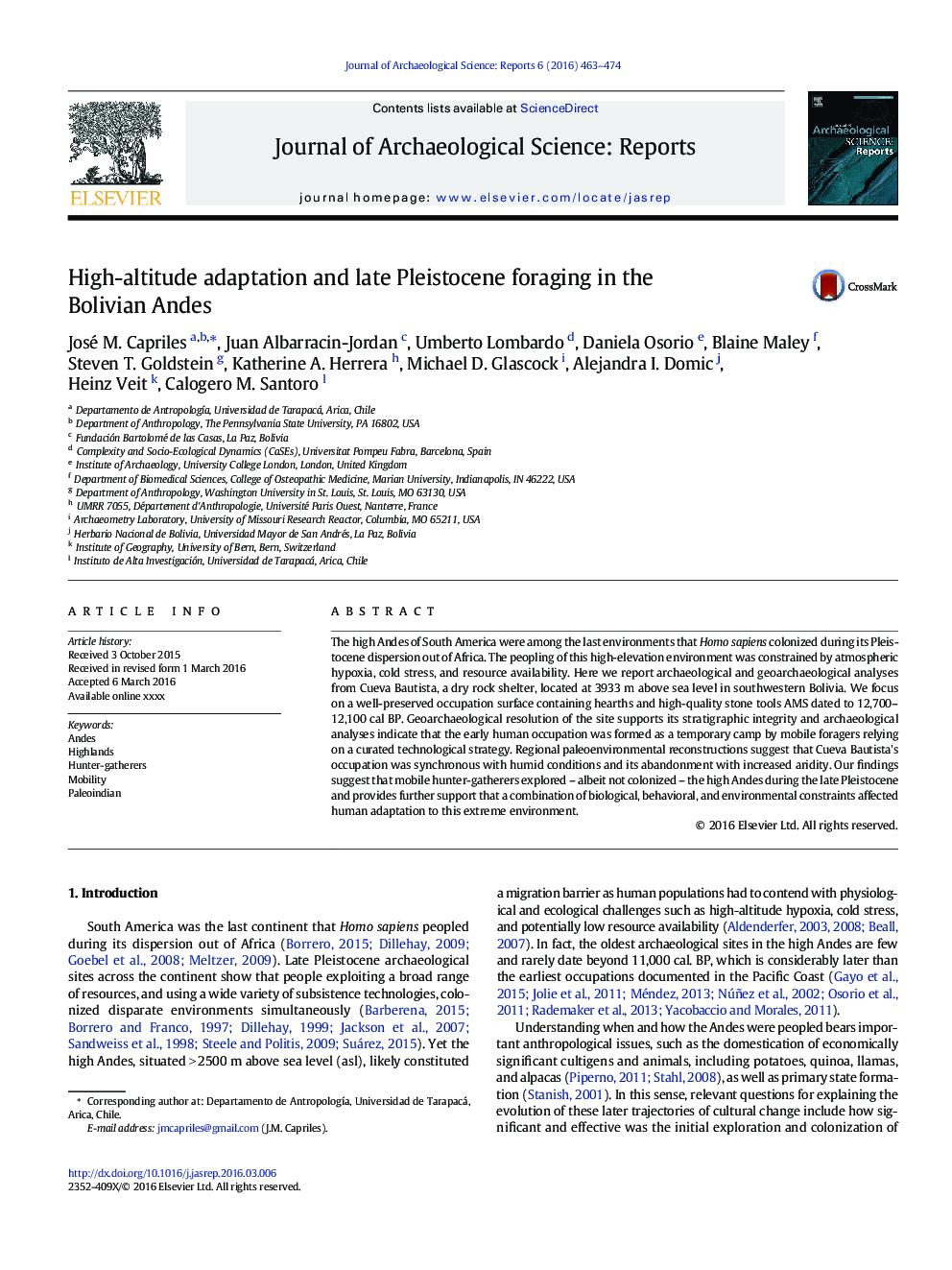| Article ID | Journal | Published Year | Pages | File Type |
|---|---|---|---|---|
| 7446514 | Journal of Archaeological Science: Reports | 2016 | 12 Pages |
Abstract
The high Andes of South America were among the last environments that Homo sapiens colonized during its Pleistocene dispersion out of Africa. The peopling of this high-elevation environment was constrained by atmospheric hypoxia, cold stress, and resource availability. Here we report archaeological and geoarchaeological analyses from Cueva Bautista, a dry rock shelter, located at 3933Â m above sea level in southwestern Bolivia. We focus on a well-preserved occupation surface containing hearths and high-quality stone tools AMS dated to 12,700-12,100Â cal BP. Geoarchaeological resolution of the site supports its stratigraphic integrity and archaeological analyses indicate that the early human occupation was formed as a temporary camp by mobile foragers relying on a curated technological strategy. Regional paleoenvironmental reconstructions suggest that Cueva Bautista's occupation was synchronous with humid conditions and its abandonment with increased aridity. Our findings suggest that mobile hunter-gatherers explored - albeit not colonized - the high Andes during the late Pleistocene and provides further support that a combination of biological, behavioral, and environmental constraints affected human adaptation to this extreme environment.
Related Topics
Social Sciences and Humanities
Arts and Humanities
History
Authors
José M. Capriles, Juan Albarracin-Jordan, Umberto Lombardo, Daniela Osorio, Blaine Maley, Steven T. Goldstein, Katherine A. Herrera, Michael D. Glascock, Alejandra I. Domic, Heinz Veit, Calogero M. Santoro,
